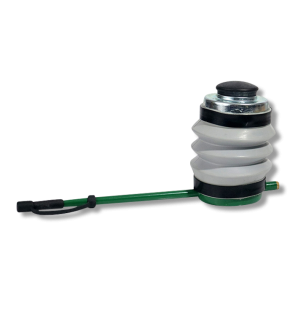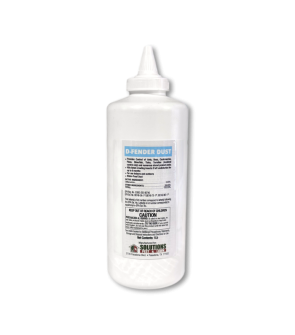Gain access to personalized product screening, the best pricing, rewards, and more!
Most Effective Products
How to Apply Pesticide Dusts
Pests that hide in hard-to-reach areas, such as bed bugs, wasps, hornets, and others, will do well with a pesticide dust application. A dust insecticide has many advantages, such as easily treating cracks and crevices for certain insect infestations.
A dust insecticide is more than simply puffing into an enclosed space, so we have compassed an easy-to-follow DIY guide to learn about pesticide dust.
Choose Your Product and Tool
The equipment to use pesticide dust will depend on the product label and the size of the treatment area. Examples of common pesticide dust tools:
- Bulb duster
- Handheld duster
- Electric duster
- Tape measurer to determine how much material to use
- Scale to weigh the amount of pesticide dust
How to Use
Be sure to wear the proper personal protective equipment (PPE) to avoid contact with or breathing in the dust.
Step 1: Measure the Treatment Area Size
 Determine how much pesticide dust to use by measuring the size of the treatment area. Find the square footage by measuring the length and width of the treatment area in feet (length X width = square footage).
Determine how much pesticide dust to use by measuring the size of the treatment area. Find the square footage by measuring the length and width of the treatment area in feet (length X width = square footage).
Step 2: Open and Load the Duster
 Open and load your selected pesticide duster as instructed in its manual.
Open and load your selected pesticide duster as instructed in its manual.
We recommend filling the duster's body 2/3 of the way with dust. This will ensure there is enough room for the air to mix with the dust.
Close the duster lid and shake to prevent clumps in the dust. Some dusters may include a ball in the duster to help break apart the clumps.
Step 3: Apply
 Apply the pesticide dust as instructed on the product label and refer to the duster manual to find out how to use it.
Apply the pesticide dust as instructed on the product label and refer to the duster manual to find out how to use it.
For example, you will squeeze the bulb to apply the dust for the Pro Blow Handheld Duster to apply a pesticide dust like D-Fender Dust.
Where to Use
Depending on the pesticide dust label, the application site will vary. Some common examples of where pesticide dust can be seen include:
- Cracks, crevices, and voids
- Plumbing penetrations
- Outdoor utility penetrations
- Underneath appliances
- In-between baseboards and carpet
- In furniture, cracks, crevices, and voids
- Behind electrical plating
What To Do After Application
Reduce Air Movement
Close all windows, doors, and other entry points into the room to prevent air from AC and fans from spreading the dust.
Follow REI
Refer to your product label to determine how long to keep people and pets away from treated areas. This will be shown under the term REI (restricted entry interval).
What to Expect
Uneven distribution is common with pesticide dust treatments. The goal is to apply a light layer of dust to the treated surface without allowing it to drift to other areas.
Key Takeaways
What is Pesticide Dust
- Pesticide dust is a formulation with a refined, ready-to-use power to control specific pests.
How Long Does it Take For Pesticide Dust to Work
- It depends on how much pesticide dust was used, the pest, and the active ingredients for pesticide dust to work.
Does Pesticide Dust Smell
- Some pesticide dust smells after application, so we recommend opening windows and doors outside to ventilate the area.








